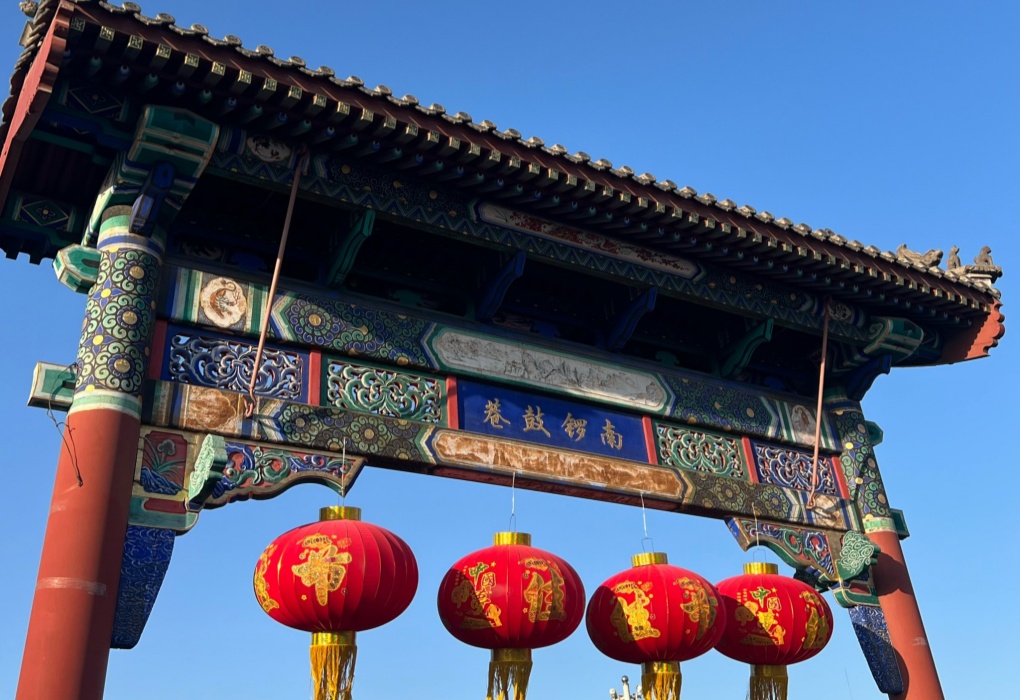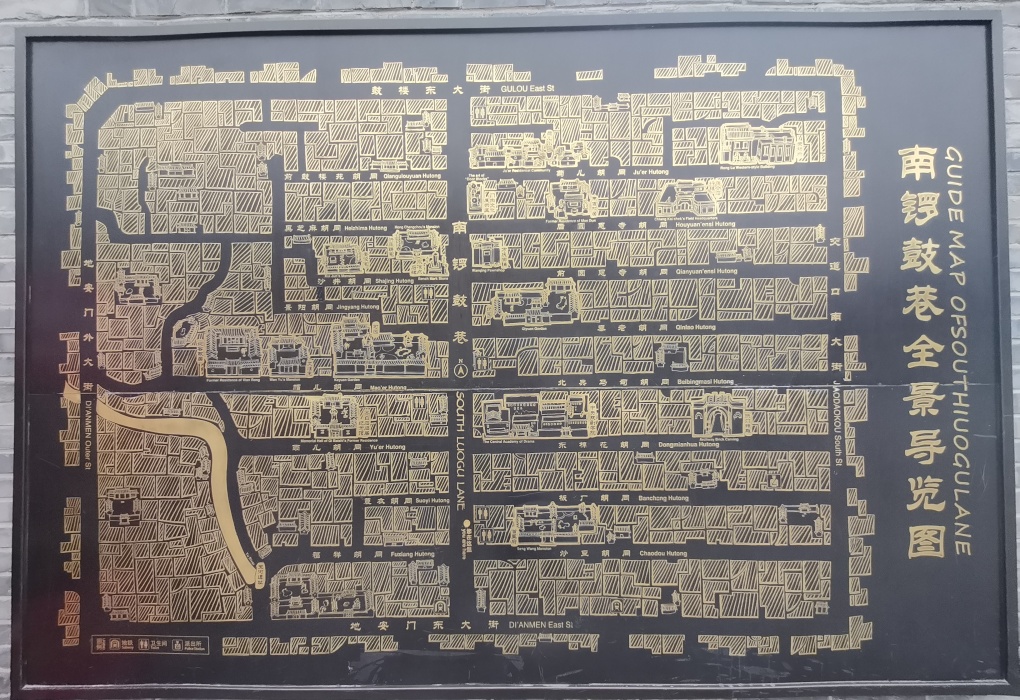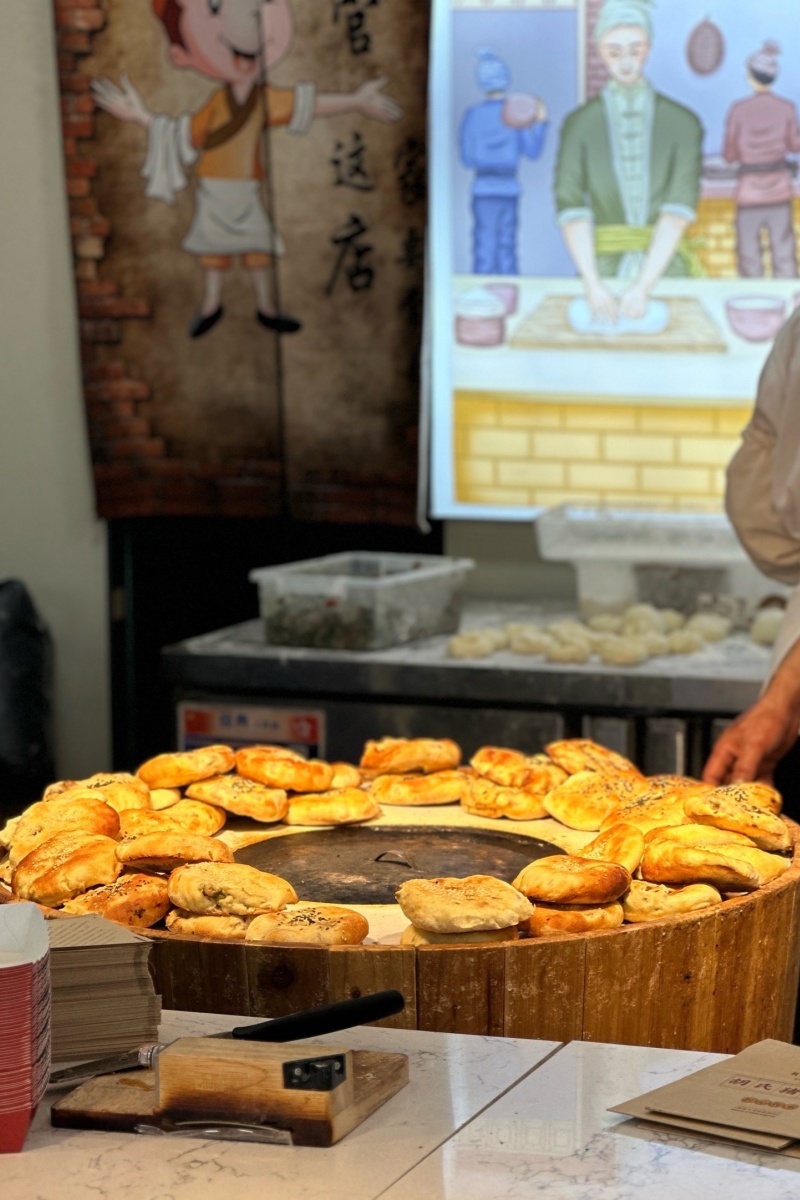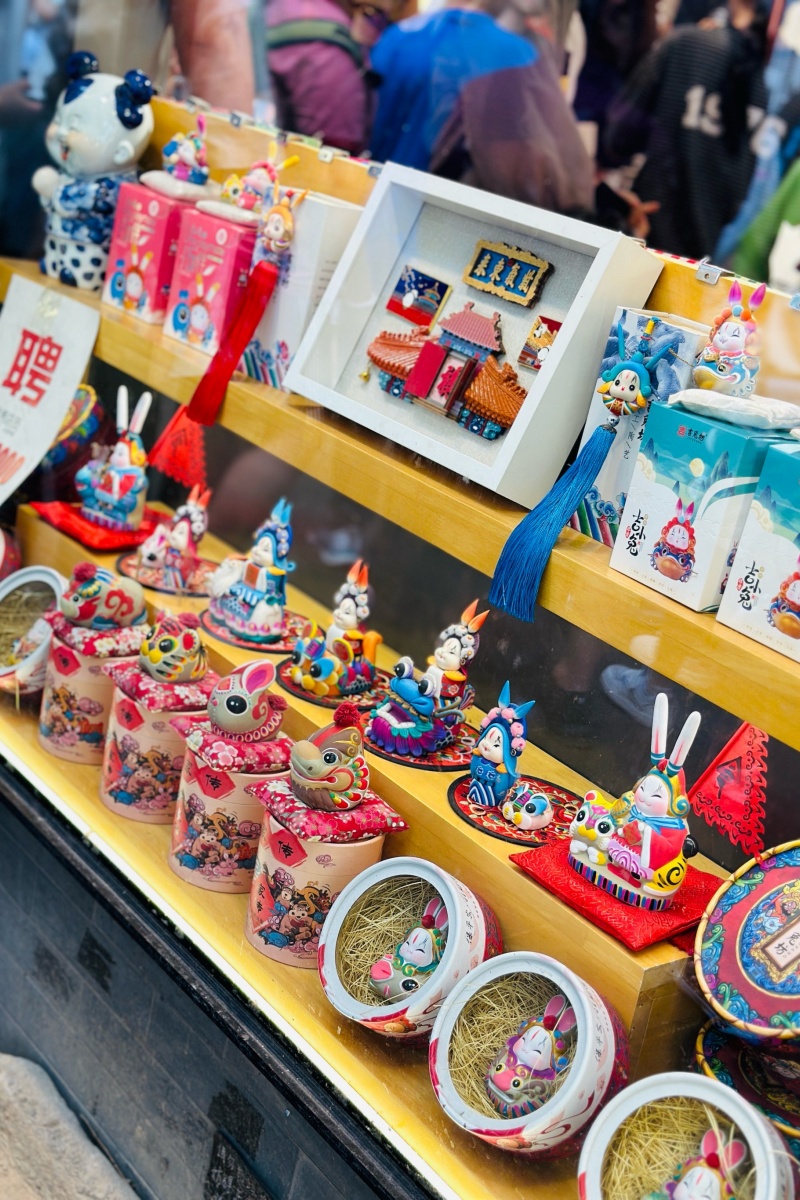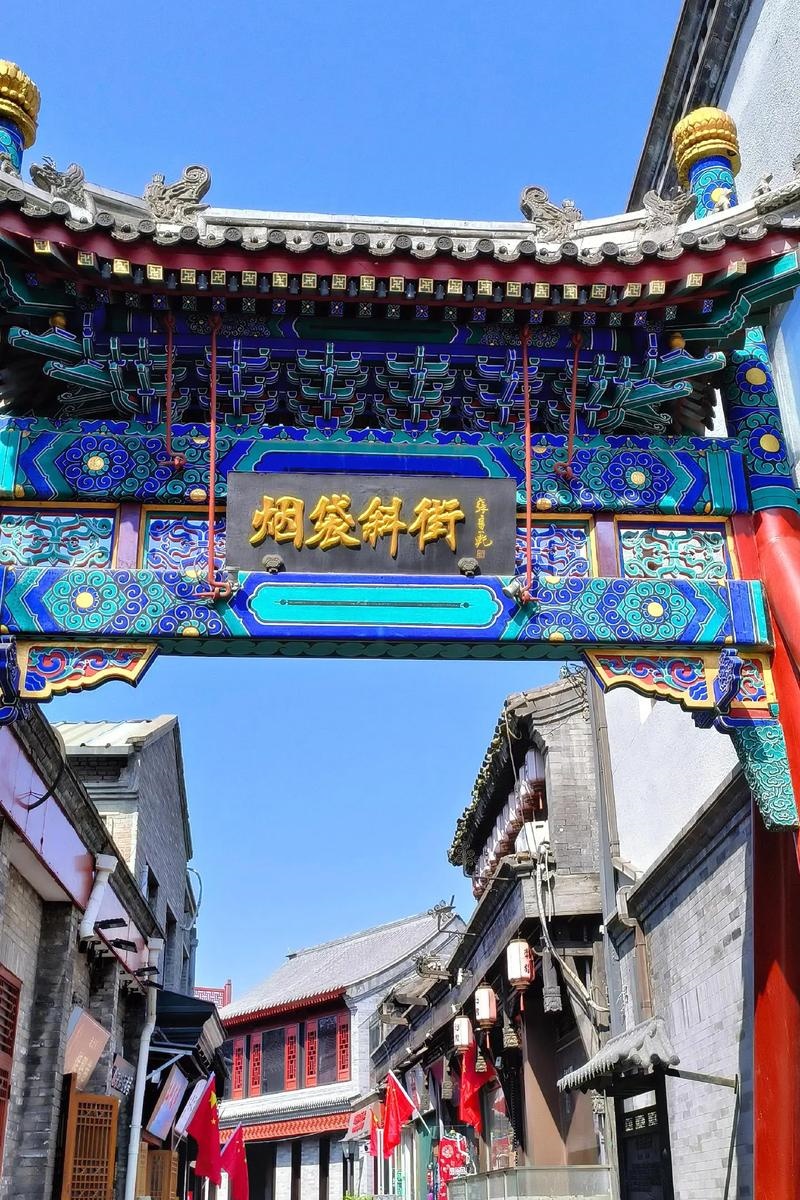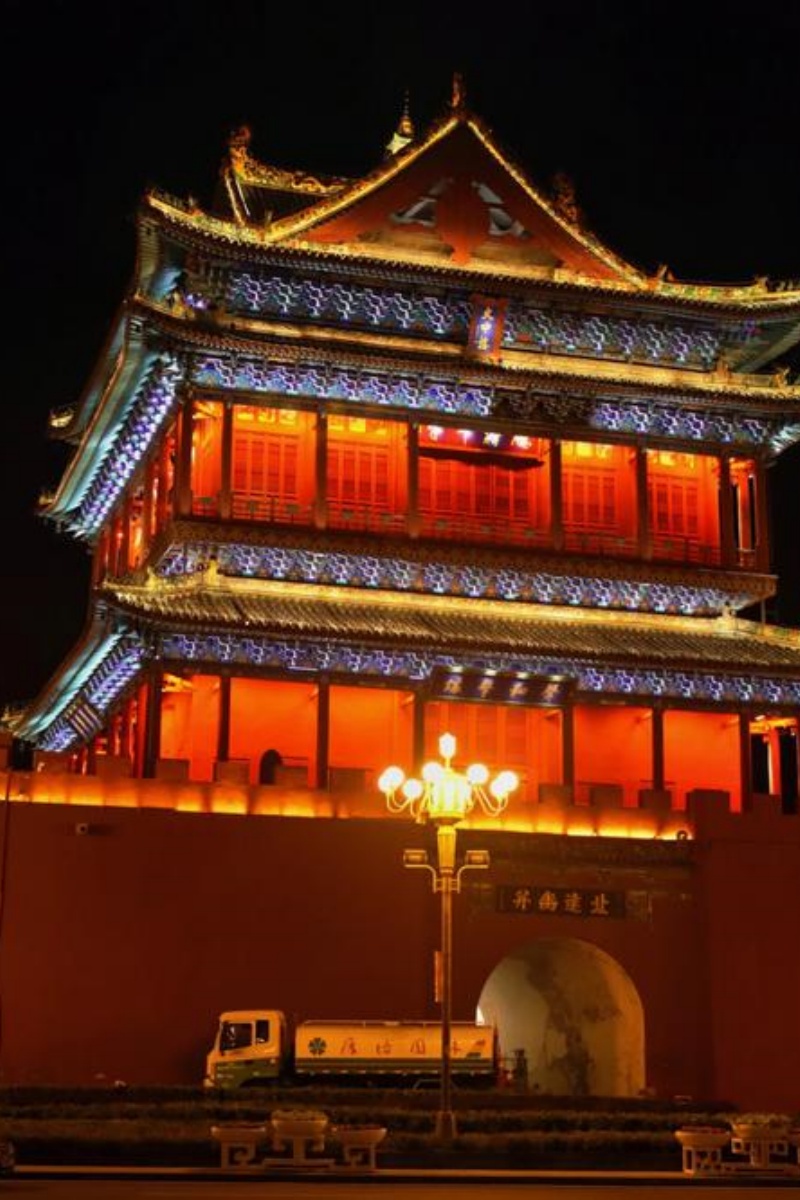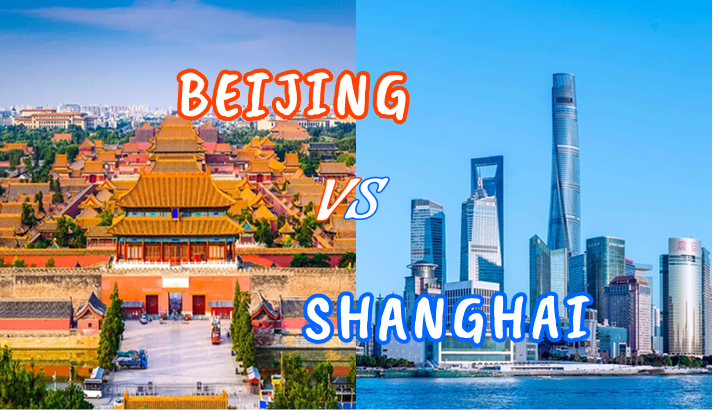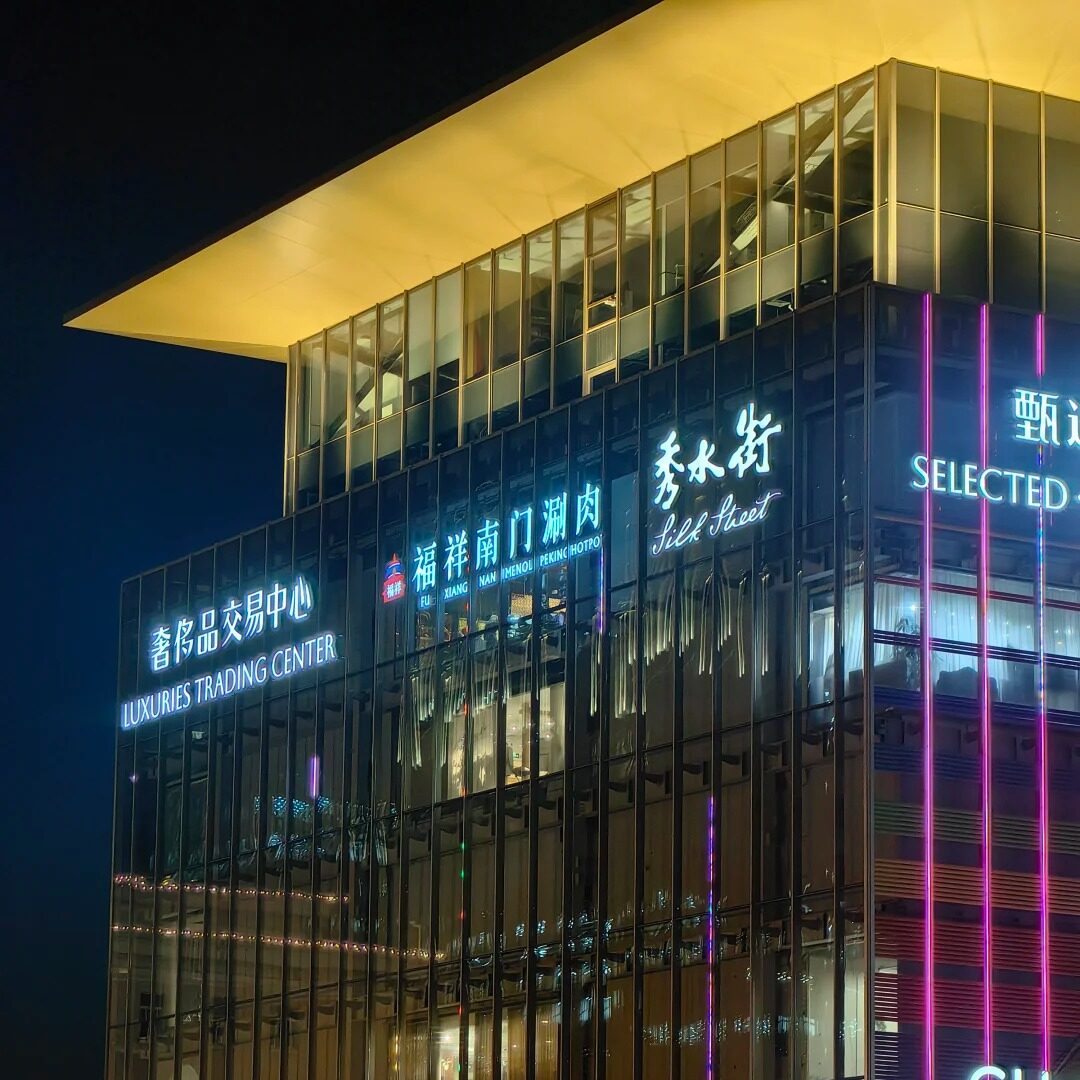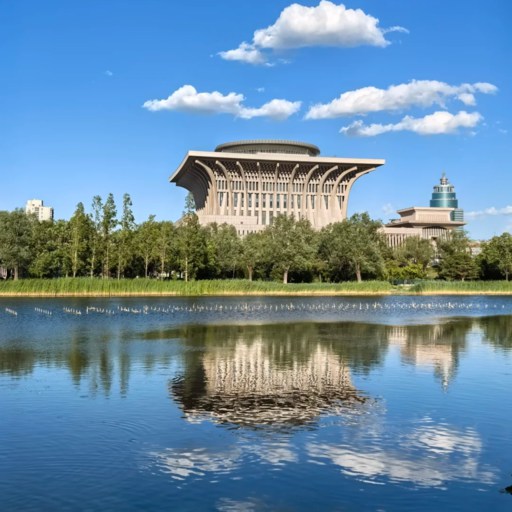Before coming to Beijing, I mostly heard about the big names—Forbidden City, Great Wall, maybe the Summer Palace. But when I finally arrived, someone local told me, “Go walk Nanluoguxiang. Not for history, but for feeling.” I didn’t really get it, but I went anyway.On my first visit, the street felt busy and a little too commercial at first. But a few turns off the main alley changed everything. I found a tiny coffee stall run by an art student, and a courtyard bookstore where the owner plays vinyl all day. People weren’t just selling things—they were living here. That surprised me.
What I remember most is the rhythm: slow tea-drinkers next to fast-walking tourists, smells of grilled meat mixing with incense. It felt layered, lived-in. In this guide, I’ll walk you through what I saw, ate, and stumbled into—beyond the postcard version of Nanluoguxiang. If you're looking for the parts of Beijing that still breathe quietly, this might be your street too.
Why Is Nanluoguxiang the Heart of Beijing’s Hutong Culture?
- The gate of Nanluoguxiang
- The Fishbone Layout
A 740-Year-Old Alley with Royal Roots
Most visitors think of the Great Wall or the Forbidden City when they hear “ancient China.” But Nanluoguxiang, a narrow alley in central Beijing, holds its own among these legends. It’s not a grand palace or a sky-high landmark. It’s something quieter—and somehow more personal. Built in 1276 during the Yuan Dynasty, Nanluoguxiang grew up with the city itself. Back then, Beijing was designed like a checkerboard, with neat rows of residential “fangs,” or zones. Nanluoguxiang sat right on the edge of two such fangs, making it a central artery in the life of imperial Beijing.
What makes this place special isn’t just its age, though that’s impressive enough. It’s the fact that Nanluoguxiang survived wars, revolutions, and waves of demolition. While many hutongs disappeared in Beijing’s rush to modernize, this one held on—like a thread in an unraveling tapestry. Today, its grey-brick buildings and tiled roofs aren’t just nostalgic décor. They’re living evidence of how the city used to breathe, talk, and move. Locals still call it by name, not as a tourist attraction, but as a neighborhood that remembers their grandparents.
The Fishbone Layout That Still Shapes the City
Nanluoguxiang isn’t just one alley—it’s a spine with sixteen ribs. Picture a fish skeleton laid flat: the main street runs north to south, and eight smaller hutongs branch off on each side. This ancient layout comes straight from Yuan Dynasty urban planning, where neighborhoods were arranged in neat grids like a giant chessboard. The structure made it easy to patrol, trade, and organize. Today, it still does—but now it helps tourists, not horsemen, find their way around.
Each side alley has its own flavor. Take Mao’er Hutong, for example. That’s where you’ll find the former residence of Wanrong, the last empress of China. A few steps away is Yu’er Hutong, where Qi Baishi, one of China’s most beloved painters, used to live. Meanwhile, Heizhima Hutong (“Black Sesame”) is a favorite among photographers for its contrast of shadow and light. Locals still use these lanes as real homes, hanging clothes on lines and chatting with neighbors by the door.
For first-time visitors, it helps to think of Nanluoguxiang like a mini-city inside the city. You can stroll the main drag, but the magic is in the side routes. Bring a paper map or download one with hutong names—many signs are now bilingual. Also, you can scan QR codes on street signs for info. It’s one of the few places where ancient design still shapes modern tourism.
From Courtyards to Cafés—How It Evolved Without Losing Its Soul
Walk ten minutes in Nanluoguxiang and you’ll see something rare: a Starbucks next to a Qing Dynasty gate, a tattoo shop beside a royal mansion. This mix of old and new is intentional—and surprisingly tasteful. After 2008, when Beijing hosted the Olympics, many hutongs were renovated. But in Nanluoguxiang, instead of bulldozing, planners preserved original walls and inserted new uses. That’s why you’ll find craft breweries and vinyl bars inside hundred-year-old homes.
Of course, it’s not all perfect. Some shops chase internet trends or sell low-quality souvenirs. But turn a corner, and you might find a tea house run by a family for three generations. These layered contrasts make the street feel more alive than manicured. For visitors from abroad, it’s like seeing a London mews turned into a boho market, or a Brooklyn brownstone repurposed as a modern café.
Wondering where to start your hutong adventure? Try 4 Iconic Routes For Beijing Hutong Walking Tour 2025
What Can You Actually Do in Nanluoguxiang Today?
- Snack
- Souvenirs
- Courtyard
Snack, Sip, and Sample Beijing—One Step at a Time
You can’t talk about Nanluoguxiang without mentioning the food. It’s not fine dining—it’s street-side heaven. You’ll see people walking and munching at the same time, holding skewers of grilled squid, cups of milk tea, or warm Beijing-style cheese. That last one? Locals line up for it at Wenyu Cheese Shop, a tiny storefront that’s easy to miss but impossible to forget. It’s thick, sweet, and totally unique to the capital.
Besides that, there’s a wild mix of snacks: sugar-coated hawthorn, roasted crab, cumin lamb skewers, and even bubble tea with chili powder. Some combos are weird but addictive. If you’re into sit-down meals, try spots like Fish Nation (known for its British-style fish & chips) or Pass By Bar, where the pizza comes with a side of Yunnan cocktails. Prices vary, but you can eat well for under 60 RMB—and for that price, it’s hard to go wrong.
Worried about ordering? Don’t be. Most restaurants and snack stalls now offer English menus, or at least photo-based ordering systems. Many accept WeChat Pay or Alipay, both of which now work with international cards. And if you’re ever unsure, just point to what the person ahead of you ordered—chances are, it’s already gone viral on Xiaohongshu.
Find Unexpected Souvenirs, from Opera Masks to Slogan Tees
Nanluoguxiang isn’t just for eating. It’s also Beijing’s creative closet, packed with stores selling things you didn’t know you needed. You’ll find embroidered Beijing opera masks, handmade clay figurines, silk scarves, and traditional cloth shoes that are both comfy and surprisingly stylish. These are the kinds of things that won’t collect dust on a shelf—they tell a story.
Want something more modern? You’re covered. Look for shops selling tote bags with phrases like “迷路才是正经事” (“Getting lost is the real plan”) or cat-themed enamel pins and postcards. There are also tea shops with tasting corners, retro vinyl stalls, and even a few stores that let you design your own T-shirt using calligraphy and stamp art.
Prices range from 10 RMB to 300 RMB, and bargaining is sometimes okay, especially in the smaller alleys. Don’t expect rock-bottom deals, but you can often get a smile—and maybe a discount—if you chat a bit in basic Mandarin. Most shopkeepers appreciate the effort, and some even speak English.
Courtyards You Can Still Feel—Not Just See
The soul of Nanluoguxiang doesn’t live in its snack stalls or souvenir shops. It breathes in the courtyards—the siheyuan—tucked behind red wooden doors. These homes are the backbone of Beijing’s hutong culture: one courtyard, four buildings, and generations under one roof. Some of these have been turned into museums, others into homes, and a few into cafes or design studios.
Walk down Mao’er Hutong or Yu’er Hutong, and you’ll catch glimpses of this past. At one end, you’ll find the residence of Qi Baishi, the beloved painter known for his shrimp sketches. A few steps away is the former home of Empress Wanrong, tucked quietly behind a modest gate. These places aren’t always open to the public, but just seeing the rooftops and alley layouts gives you a sense of how Beijing used to function—like a big city built on small, tight-knit spaces.
If you want more than a walk-by view, consider booking a courtyard guesthouse for the night (like The Orchid Hotel, which accepts foreign guests). Waking up in one of these historic homes, with birds chirping and shadows dancing on the walls, makes your visit feel less like tourism and more like time travel.
If Nanluoguxiang isn’t enough, where else can you shop like a local? Start with Top 12 Beijing Markets for Bargains and Local Life
How Do You Plan a Meaningful Visit to Nanluoguxiang?
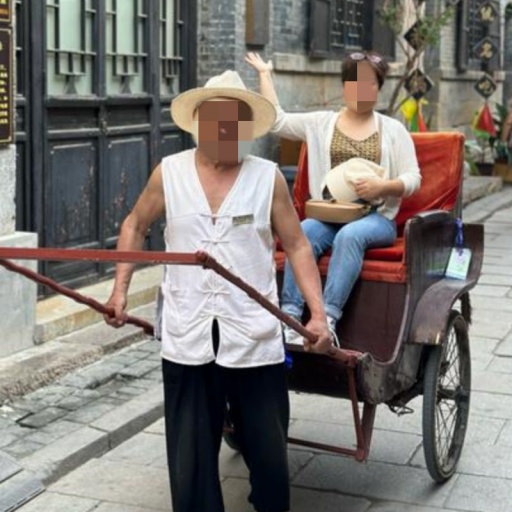
rickshaw tour
Best Times to Go (and Times to Avoid)
Nanluoguxiang is open year-round, but that doesn’t mean every moment is equal. Weekends? Avoid them if you can. On Saturdays, the main alley can feel like a slow-moving river of selfie sticks and ice cream cones. If you go during a national holiday like Golden Week, prepare to shuffle through shoulder-to-shoulder crowds.
Instead, aim for weekday mornings, especially between 9:00 and 11:00 AM. That’s when shop owners are just opening up, locals are walking their dogs, and the streets still belong to the city—not the camera. You’ll hear birds, not Bluetooth speakers. And you’ll have space to actually look around without bumping into elbows.
Evenings are great too—especially in summer. After 6 PM, the crowd thins, lights come on, and the atmosphere shifts. It’s cooler, quieter, and perfect for slow walks or photos. Plus, if you’re staying nearby, it’s a lovely time to catch live music or chat with a bartender. Just avoid arriving after 10 PM, when most shops close and taxis can be harder to get.
Subway, Taxi, or Rickshaw? Choose Based on Your Mood
Getting to Nanluoguxiang is surprisingly simple. The Nanluoguxiang Station on Line 6 and Line 8 drops you off right at the south entrance. Exit Gate E, and boom—you’re there. Subway signs are bilingual, and ticket machines take WeChat, Alipay, and sometimes Visa. A ride costs around 3 RMB.
Prefer the street-level view? Taxis in Beijing are cheap—usually 20–40 RMB from most city-center spots. Just tell the driver “南锣鼓巷” (Nánluógǔxiàng), or show it on your phone in Chinese. Apps like DiDi also work well, and they now have an “English ride-hailing” mode designed for foreign travelers.
Want a more nostalgic ride? Try a rickshaw tour. Prices start around 100 RMB for a 30-minute loop through smaller hutongs. Some drivers are guides too—they’ll point out hidden temples or tell stories from the old city. It’s not the fastest ride, but it’s definitely one of the most charming ways to arrive.
Itinerary Ideas: Half-Day, Full-Day, and Combo Plans
You don’t need a full week to enjoy Nanluoguxiang—but you do need a plan. For a half-day visit, start at the south gate in the morning. Walk slowly, grab a snack, turn into Mao’er Hutong, and loop back through Heizhima Hutong. Wrap up with coffee at a courtyard café, then head to nearby Drum Tower for rooftop views.
If you have a full day, combine Nanluoguxiang with Yandaixie Street and the Lama Temple. Both are within 20 minutes on foot. You’ll get historic architecture, hip shops, and Buddhist serenity—all in one loop. For lunch, stop by Mr. Shi’s Dumplings or one of the quieter teahouses off the main drag.
Got more time? Build a 2–3 day itinerary around Nanluoguxiang. Include the Forbidden City, Jingshan Park, and Houhai Lakes. These sites are just a few subway stops away. Each offers a different piece of the city’s puzzle: imperial power, urban greenery, and laid-back nightlife. Stay in a nearby boutique hotel, and you’ll see how old Beijing feels when you don’t rush.
What Are the Must-See Spots Around Nanluoguxiang?
- Yandaixie Street
- Drum & Bell Towers
Yandaixie Street—The Quieter Cousin with a Funky Soul
Just a 15-minute walk west of Nanluoguxiang, you’ll stumble into something equally old but totally different—Yandaixie Street. The name means “Skewed Tobacco Pipe Street,” a nod to its early shops that once sold long-stemmed pipes. Today, it feels like a vintage lane dipped in color and curiosity. Unlike Nanluoguxiang’s sometimes polished vibe, Yandaixie is quirkier, funkier, and a little less self-conscious.
You’ll find tiny antique stores where owners sip tea behind counters, and poster shops that still sell Bruce Lee calendars and 1970s Chairman Mao badges. A few of the side alleys have become havens for photographers and content creators—especially in the late afternoon when the sunlight hits the stone walls at just the right angle. Prices here are slightly lower, and while bargaining isn’t expected, it’s not frowned upon either.
At the end of the street, you’ll run straight into the Houhai Lakes. It’s a great combo: walk through Yandaixie for vintage shopping and then head to the lake for drinks or a sunset paddleboat. If Nanluoguxiang is the playlist everyone knows, Yandaixie feels like the B-side that locals keep on repeat.Drum & Bell Towers—Beijing’s Timekeepers
Drum & Bell Towers—Beijing’s Timekeepers
Only 200 meters from Nanluoguxiang’s north end, the Drum Tower and Bell Tower have been standing for centuries—since the Yuan Dynasty (13th century)—as the city’s official timekeepers. Back in the day, drums were struck to mark the passing of hours, and the bell signaled the start of each day. It’s like an ancient public clock system—before wristwatches, before smartphones.
Today, you can climb both towers for panoramic views of the hutong rooftops and modern skyline beyond. Tickets are 30–50 RMB per tower, or 80 RMB for a combo ticket with access to both. You’ll see drum performances every hour, and many displays inside explain the city’s timekeeping systems and neighborhood evolution.
The towers are also excellent photo spots, especially at sunset. The light casts warm shadows on the rooftops below, and you can capture that rare contrast between old and new. If you’re short on time, choose the Drum Tower, which is slightly more interactive and often less crowded. For tickets, you can book in advance through Trip or pay at the door.
Can You Stay Overnight in Nanluoguxiang—and What Is It Like After Dark?
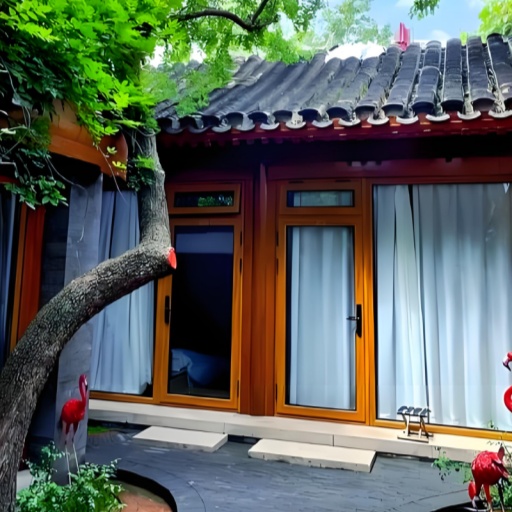
Boutique Courtyards and Stylish Hostels Hidden in the Hutongs
Boutique Courtyards and Stylish Hostels Hidden in the Hutongs
Yes—you can absolutely spend the night in Nanluoguxiang. And you should. Staying overnight means you get to enjoy the quiet side of the area after the daytime crowds leave. Unlike many tourist zones, Nanluoguxiang has accommodation options that are deeply tied to local character—think boutique courtyard hotels instead of generic chains.
One of the most popular places is The Orchid Hotel, tucked inside a quiet side hutong. It’s a restored siheyuan (courtyard house) that accepts foreign guests, has an English-speaking staff, and even offers bikes and rooftop views. Another traveler favorite is Peking Yard Hostel, which blends rustic brick architecture with minimalist design—plus it’s budget-friendly.
Prices range from ¥400 to ¥900 per night, depending on room type and season. These hotels offer more than just a bed—they're immersive spaces. You wake up to birds chirping in the courtyard, and maybe a whiff of fresh soy milk from a neighbor’s breakfast prep. It's the kind of stay you’ll remember.
What Happens in Nanluoguxiang After Sunset?
By 7 PM, the loudest part of Nanluoguxiang softens. The streetlamps flicker on, cafés light up their courtyards, and the entire hutong starts to breathe differently. The daytime noise gives way to clinking teacups, soft guitar music, and couples strolling under lanterns. It's no longer a tourist stop—it becomes a neighborhood again.
You might stumble upon a live jazz set at a courtyard bar, or a tea house hosting poetry readings or even open mic night. Shops close around 10 PM, but some hidden bars stay open much later. Ask around or follow a side alley—you’ll find speakeasy-style bars with antique decor and menus scribbled in chalk. Drinks are usually ¥60–80 and many bartenders speak basic English.
If you’re into night photography, this is your moment. The mix of lantern light, shadows on the stone, and near-empty streets gives Nanluoguxiang a dreamy stillness. It's Beijing at its slowest—and arguably, its most beautiful.
Is It Safe and Worth Staying Here Overnight?
In short—yes, very safe. Nanluoguxiang is located in Dongcheng District, one of Beijing’s most secure and well-maintained zones. The area is patrolled regularly, has 24-hour lighting, and most hotels come with gated access and cameras. You’re more likely to hear a neighbor’s radio than anything risky.
The location is also super convenient. You can walk to the subway in minutes, grab breakfast at a local baozi shop, and still be close to major attractions like the Lama Temple or Jingshan Park. Staying here also means you don’t need to rush your visit—wake up early and photograph the alleys when they’re empty, or stay out late without worrying about transportation.
Most importantly, sleeping in a hutong courtyard lets you live, not just visit. You hear water buckets being filled, you smell someone steaming buns next door, and you’ll feel the pace of old Beijing settle into your bones. It’s not flashy—but for many travelers, it’s exactly what they didn’t know they were looking for.
Frequently Asked Questions (FAQs)
Q: Is Nanluoguxiang worth visiting if I’ve already been to the Great Wall and Forbidden City?
Honestly? I had the same question before I went. After two days of the usual Beijing “must-sees,” I wasn’t sure Nanluoguxiang would add anything new. But it’s not really about sightseeing—more like people-watching and aimless walking. You grab a roasted sweet potato from a corner vendor, wander into a leather notebook shop you didn’t mean to enter, then find yourself chatting with a guy sketching outside his hutong home. There’s something grounding about it. You’re still in the capital, but it feels a few beats slower. If you’re into that off-script kind of travel, yeah, it’s very worth it.
Q: Can I just walk into Nanluoguxiang or do I need tickets or a guide?
You definitely don’t need a ticket—Nanluoguxiang is just a public street. No gates, no fences, no entry fees. I just hopped off the subway at Nanluoguxiang Station, took Exit E, and walked straight in. That said, without knowing what to look for, you might walk straight through and think, “That’s it?” Because the good stuff’s not obvious. It’s down the alleys, behind unmarked doors. I didn’t use a guide, but reading a few stories beforehand helped. Honestly, just talk to someone who’s been—half the charm comes from knowing what not to skip. Or maybe that’s just how I got lucky.
Q: What kind of food can I find in Nanluoguxiang—anything that’s not a tourist trap?
Yeah, there’s plenty beyond overpriced bubble tea and chain snacks. You just need to drift off the main drag. I stumbled into this place called Wenyu Cheese Shop—it’s been there since the '80s, still packed with locals. Another alley led me to a tiny lamb skewer stall where the guy grilled right over a coal pit—no signboard, no English menu. You’ll also find old-school Beijing yogurt in clay jars, and if you’re lucky, fresh jianbing made in someone’s doorway. Sure, there are touristy spots too, but if you’re paying attention (and trust your nose), the real eats aren’t far.
Q: Is it possible to see Nanluoguxiang in just one hour?
Technically, yes—you could walk from one end to the other in 15 minutes. But would I recommend that? Not really. You’d miss the whole point. It’s not a checklist place. I ended up spending nearly two hours there without meaning to, just poking into shops, waiting in line for fried persimmon cakes, sitting on a stoop watching a kid chase a pigeon. Time stretches out in those alleys. So yeah, if you’re rushing, fine, do your loop and go. But if you’ve got even a sliver of curiosity or hunger, one hour flies fast—and feels kind of unfair to the place.
Q: Can I find unique souvenirs in Nanluoguxiang that aren’t mass-produced?
Yeah, if you’re willing to skip the fridge magnets and dig a little. I found this calligraphy shop run by an older couple—they hand-make paper and even grind their own ink. Another place sold postcards printed with woodblocks carved on-site. It’s not all that deep, but it beats another silk scarf with “China” stamped on it. Avoid the stalls near the entrance—they’re more about volume than vibe. The better stuff hides toward the side lanes or quieter back ends. It’s kind of a hunt, to be honest. But that’s what makes it satisfying when you finally spot something special.
Q: Can you eat vegetarian or halal food in Nanluoguxiang?
Totally. I wasn’t expecting much, but I saw signs in English for halal beef noodles, and even a veggie dumpling place that used no MSG. One shop did amazing grilled eggplant skewers and lotus root chips—kind of addictive. I asked if they were vegetarian-friendly, and they handed me a laminated card with ingredients. It felt weirdly thoughtful. Not every place will go that far, but you’ll find options if you look past the obvious skewers and sausages. It’s not a vegan paradise, but you won’t go hungry eithe
Want more China travel ideas? Check out our city guides on Beijing, Shanghai, Guangzhou, and Chengdu.
